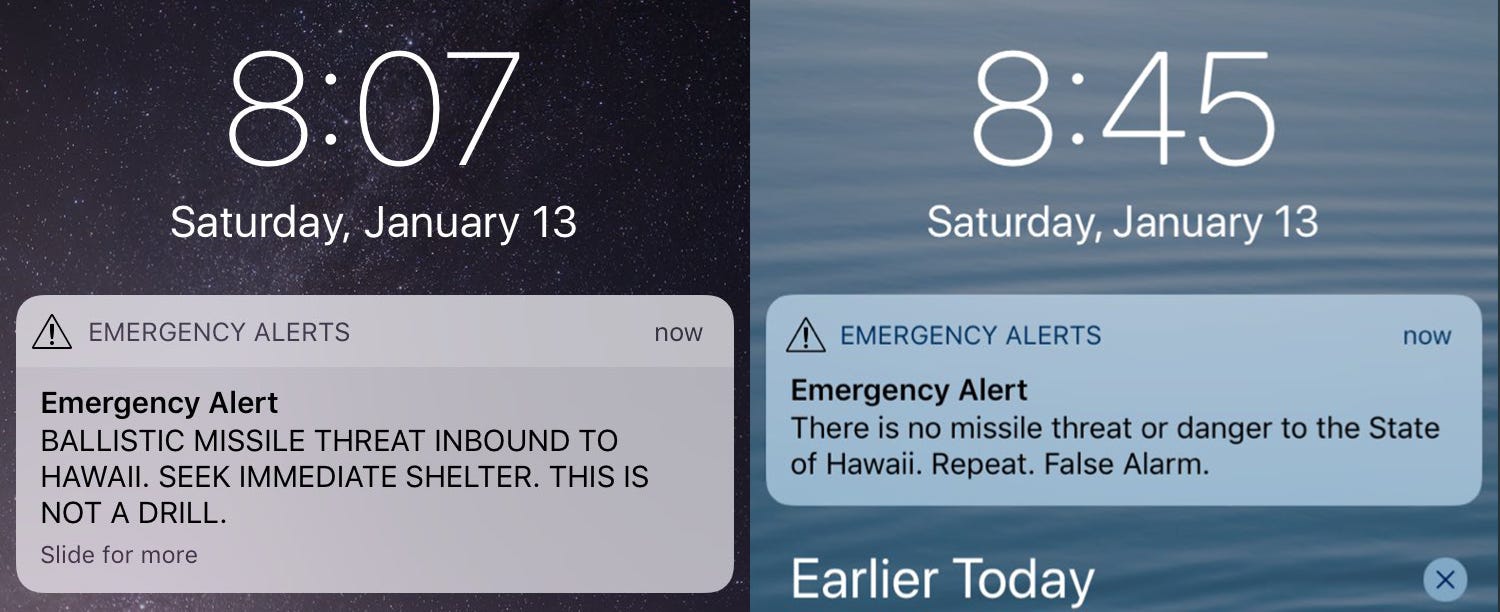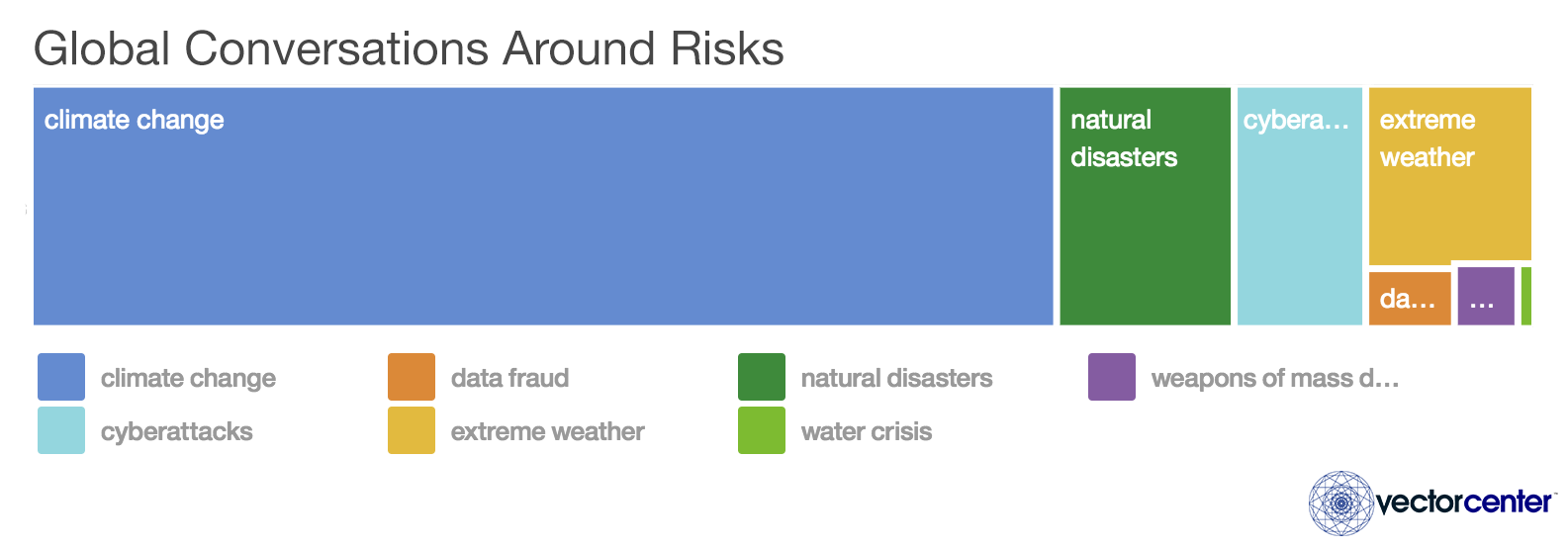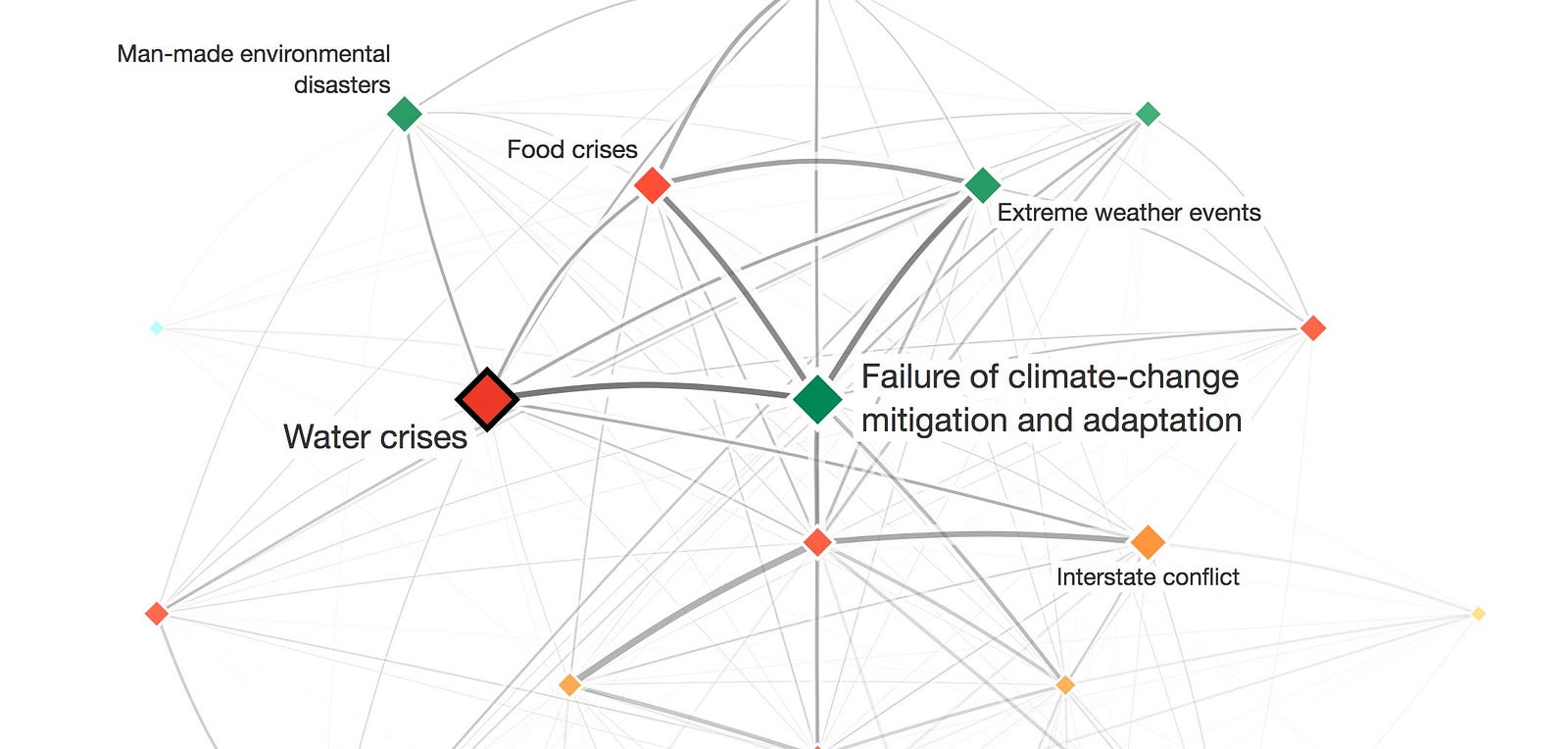Perceiving Risk in an Ever-Changing World: The 2018 WEF Global Risks Report
The world is going through a profound period of upheaval, as interconnectedness brings prosperity but also threatens governmental, community, and institutional responses to immediate threats and long term risk.
That’s the conclusion of the World Economic Forum annual Global Risk Report 2018, published in advance of the Forum’s annual meeting in Davos next week.
For the second year in a row, extreme weather events topped the list of risks most likely to occur over the next 10 years while weapons of mass destruction once again held strong in the category of risks with the biggest potential impact.
Nearly 1000 participants across the Forum’s expert community responded this year; 59 percent concluded that risks are intensifying and only 7 percent think that risks are on the decline.
Water, Water Everywhere…
For the fifth year in a row, water crises remain among the top five of global risks of greatest impact this year. Unsurprisingly, the environmental risks most strongly linked to water crises — namely extreme weather events, natural disasters, and a failure of climate-change mitigation and adaptation — all ranked among the top five risks in terms of both likelihood and impact.
The report offers a grim outlook on one of the possible “future shocks” that linked water crises, environmental risks, and economic interconnectedness: a possible global food chain breakdown.
Dubbed a “breadbasket failure,” the report warns that extreme weather, crop disease, or another crisis, could lead to geopolitical instability at a regional or even global level as supply chains broke down and resource competition increased.
The report doesn’t quantify the risk of such an extreme shock, but instead offers the scenario as a “food for thought and action.” However, this type of breadbasket failure has been linked to the Syrian crisis by researchers.
Cyberattacks and Weapons of Mass Destruction

Of the non-environmental and non-water crisis risks, cyber security ranked high in the top ten, with both cyberattacks and data fraud or theft ranking third and fourth respectively in the likelihood dimension.
Weapons of mass destruction, which have been moving up the list of risks of high impact, remained number one this year, though its likelihood remained low.
The report is published in the shadow of increased tensions between the US and North Korea over the DPRK’s nuclear arsenal. Two early warning systems’ failures in the last week in Japan and the United States, which triggered public alerts of imminent incoming ballistic missiles, have colored the global conversation around a nuclear threat.
Curiously linking the threats of cyberattacks and weapons of mass destruction, the Pentagon’s own Nuclear Posture Review called for a possible nuclear response to a cyberattack on the US according to the New York Timesearlier this week. This news, of course, came out after the report’s data collection period.
Economic Highlights:
While the report noted that the eight-year global economic recovery had diminished the perception of economic risk, major risks remained:
- U.S. stocks may be in a period of high overvaluation, according to the CAPE-Shiller P/E model (cyclically adjusted price/earnings ratio). The last time they were this high clustered around the economic shocks of 1929 and 2000, the report noted.
- China’s rapid economic expansion has created a potential debt flash point for the nation. An intervention from the Chinese government to stabilize the Chinese market could have a global effect on demand.
- Finally, the report noted that markets seem to not be pricing in political risk, warning that increased global protectionism, led by the U.K. and the U.S., could lead to a global financial shock.
Vector Center Graphic: Who’s Talking About What
Over the same period as thought-leaders responded to the GRPS (August 28, 2017 through November 1, 2017), Vector Center looked at the shared conversations online around the top-five global risks in both the impact and likelihood categories. Climate change dominated online news and social media conversations, while water crisis and crises, which ranked in the top five for impact, were barely discussed in the same period.

Also of Note:
The Global Risks Perception Survey (GRPS) participants were drawn from across the World Economic Forum Experts Network. They are primarily men aged 40–59: with 70.36 percent of respondents being male, 27.93 percent female, and 1.71 percent other. Nearly 60 percent of respondents were between the ages 40 and 59 years old.

